Dell XPS 13 Review
by Brett Howse on February 19, 2015 9:00 AM EST- Posted in
- Laptops
- Dell
- Ultrabook
- Broadwell-U
- XPS 13
Gaming Performance
Normally on an Ultrabook we would not dedicate an entire page to gaming performance, because the integrated GPUs do not perform very well on our gaming tests. However, with this being our first example of Broadwell-U, it is a good time to revisit this and see how the new graphics capabilities of Broadwell compare to the Haswell processors.
With the Core i5-5200U in both of the XPS 13s that we received, we have 24 execution units, compared to only 20 on Haswell-U. In addition, the 14nm process should help with throttling. The FHD model (1920x1080) arrived with a two 2GB memory modules and the QHD+ version came with 2 x 4GB.
First, let's look at the synthetic benchmarks, starting with 3DMark and then moving on to GFXBench.
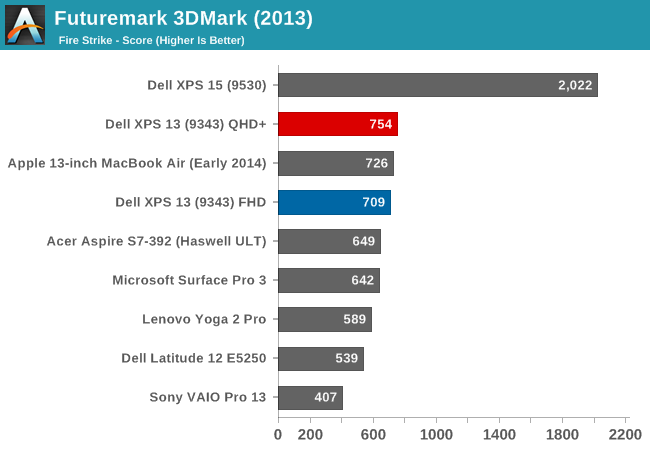
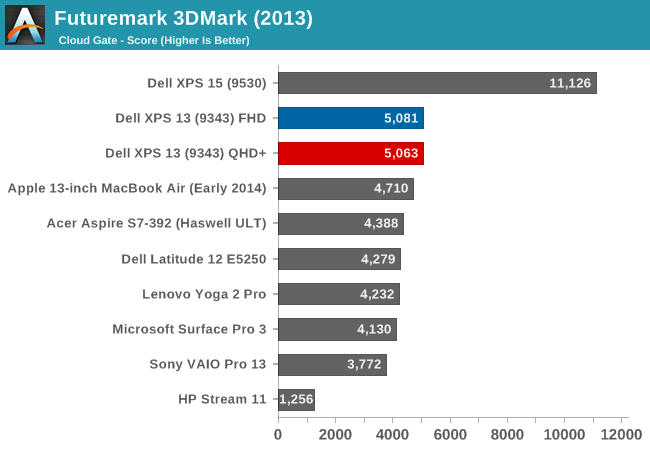
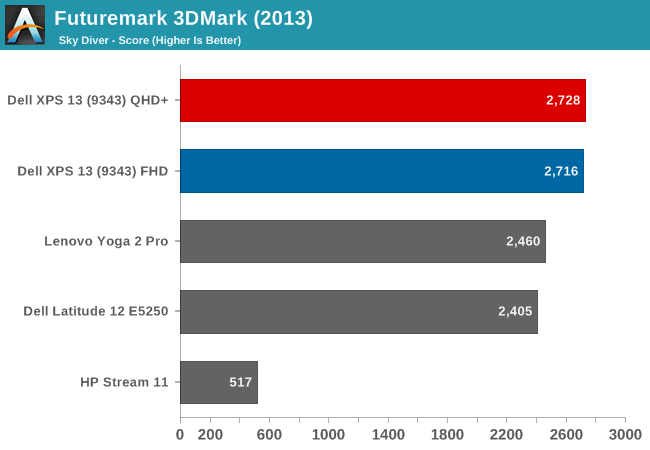

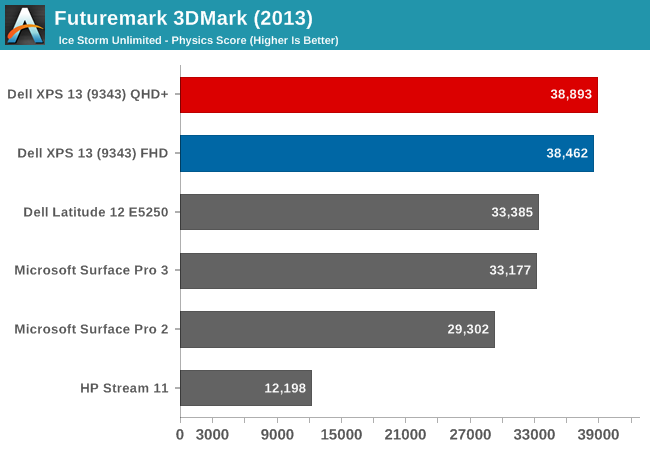
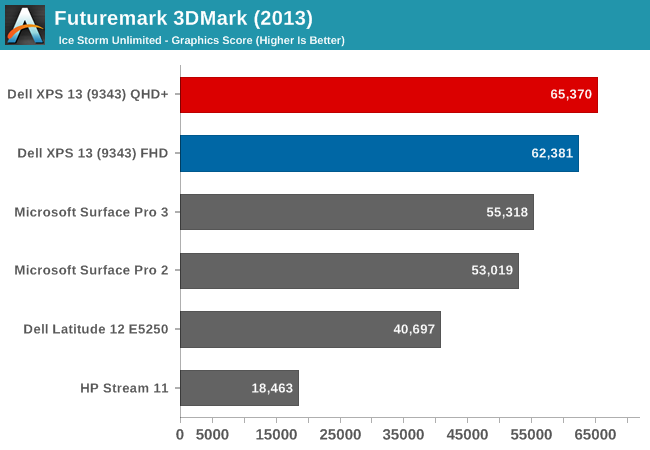
The 3DMark results begin to show the increased GPU performance of the Gen8 graphics. Broadwell-U outperforms all of the Haswell-U parts on all of the tests, and the QHD+ model gave a fraction more performance as well in a few tests.

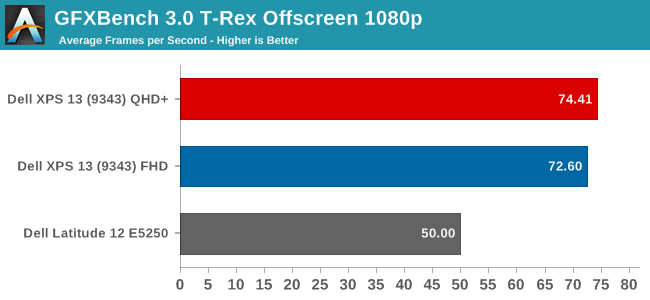

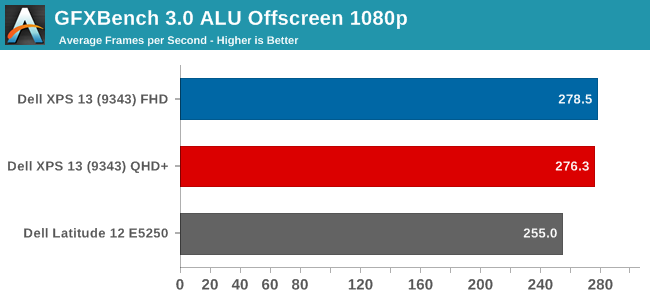
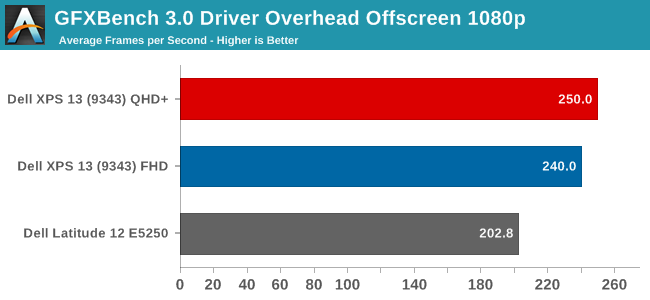
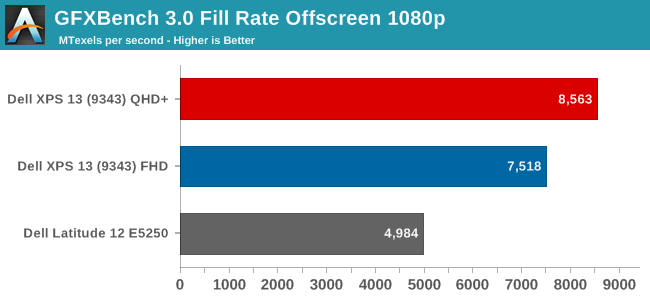
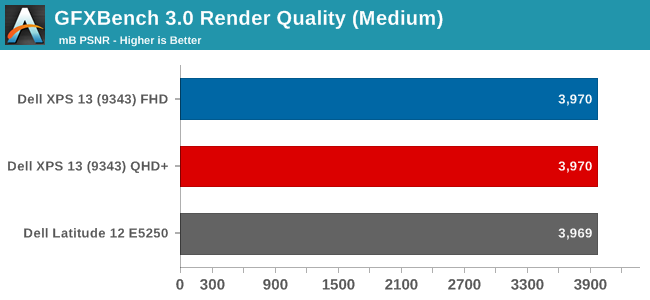
The initial results for the new GPU look pretty good, with the new GPU soundly beating the Haswell-U parts. The HP Stream 11, with just 4 EUs, trails quite far behind. GFXBench is one of our newer benchmark choices for Windows 8, and we will add more data as we get a few more devices to test.
Next, let's look at our gaming benchmarks. Due to the low performance of the integrated GPUs, I just ran our gaming tests at the Value (1366x768 ~Medium) settings.

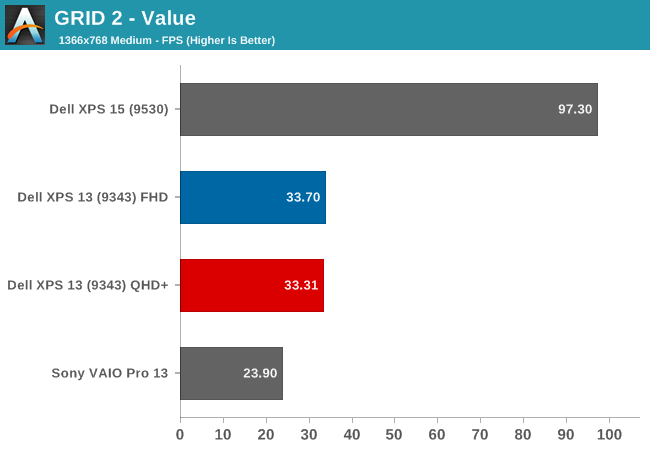

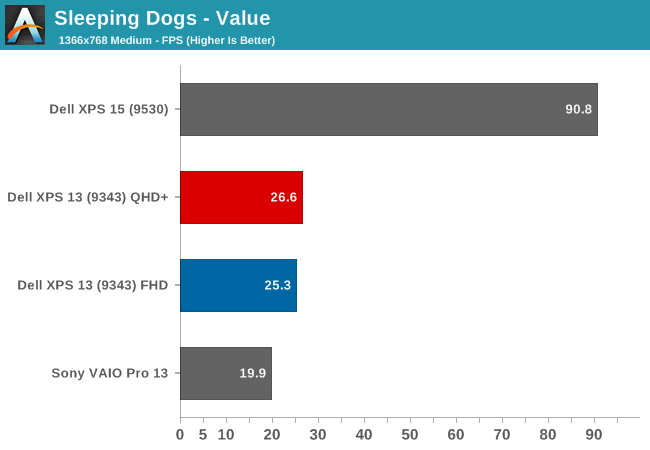
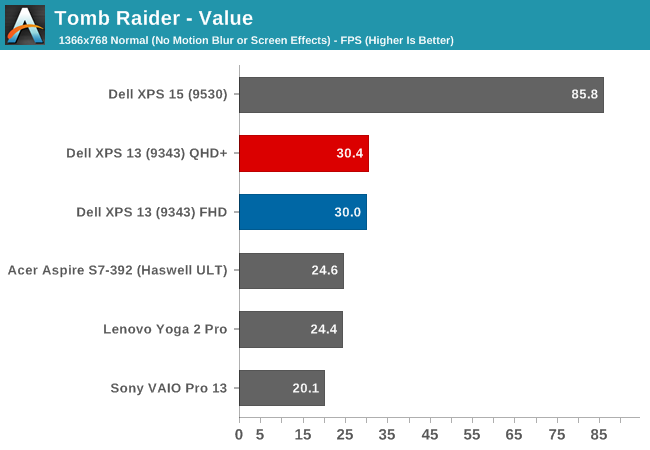
Here we can see once again that the new GPU is certainly stronger, but it is still not quite enough to make any of these games very playable on our Value settings. The Dell XPS 15, with its discrete GPU, carries a huge lead over the integrated GPU offerings. Still, the new Gen8 Graphics with more execution units per processor, as well as a change to the architecture of each execution unit, has made a healthy improvement. The new GPU has only eight EUs per sub-slice now, as compared to ten in Haswell-U, which help in many workloads. Ian has a nice writeup on the changes.
However, our gaming benchmarks are not tested at the lowest possible settings. All of the benchmarks start at 1366x768 with medium settings, so let's drop down another notch.
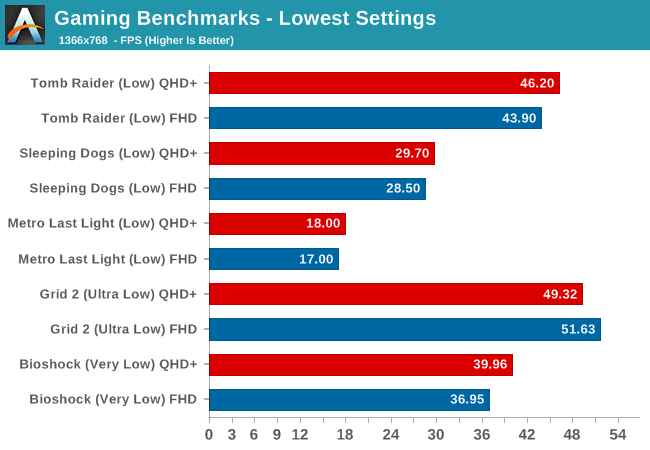
By setting the games to their lowest settings, some of them are now playable. We are still a long ways off of the performance of a discrete GPU, but slowly integrated graphics are improving.
Finally, we have a new gaming benchmark to add to our repertoire. Anand first used the DOTA 2 bench for the Surface Pro 3 review and it will be our go-to benchmark for devices like this without a discrete GPU. Our Value setting will be 1366x768 with all options off, low quality shadows, and medium textures. Midrange will be 1600x900 with all options enabled, medium shadows, and medium textures, and Enthusiast will be 1920x1080 with all options maxed out.
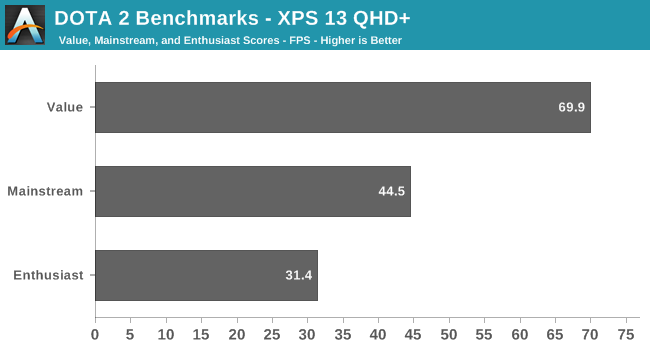
We do not have any other comparison points at the moment, but it is very clear that a game like DOTA 2 is very playable on a device with an integrated GPU. Frame rates, even with good settings, are very reasonable.
So Broadwell has raised the stakes again, but the end result is Intel's Integrated GPU is still not going to let you play AAA titles with good frame rates. Hopefully we can get some good comparisons between Broadwell-U and the AMD APUs in the near future. It will also be interesting to see what happens on the higher wattage Broadwell parts, some of which will contain significantly more EUs.










201 Comments
View All Comments
qasdfdsaq - Friday, February 20, 2015 - link
Apple charge £120 to upgrade from a 1TB drive to a 3TB drive in an iMac 27". These are standard 3.5" desktop drives. The price difference between a 1TB drive and 3TB drive at retail is about £35. £120 may not sound like much but that's still 350% more than free market prices.Then there's the £800 for a 1TB SSD. Market prices are around £350. It's rather irrelevant if you can find a Samsung XP951 cheaper, they do not at any point advertise it being a Samsung XP951.
Even so, a 512GB XP951 costs £340 at retail, whereas the 'Apple cost' for it is around £450. And this is in a 27" iMac that can easily fit two, if not four 2.5" SSDs which would offer comparable storage and performance at less than half the cost - but they don't offer the option. Deliberately offering a very expensive option with no real advantages is the pretty much the definition of price gouging (note that I'm not referring to the US legal definition here)
Synomenon - Thursday, February 19, 2015 - link
So what's gaming performance like b/w the QHD+ and FHD versions if BOTH have 8GB of RAM?Jon Tseng - Thursday, February 19, 2015 - link
Interesting - all credit for testing QHD vs. FHD. I'd seen the other reviews (QHD only) showing mediocre battery life and had been wondering why 14nm was't delivering an improvement!odedia - Thursday, February 19, 2015 - link
I can't believe you published this but still didn't publish the iMac 5k review. Disappointing.Ryan Smith - Thursday, February 19, 2015 - link
To be clear, Brett's job here is to look at laptops and WinPhone devices. The iMac is my task, and what Brett works on has no impact on that.Samus - Thursday, February 19, 2015 - link
Dell's still trying to shake off their poor reputation during the 00's, especially with bomb's like the Inspiron 700mBut this is a solid machine.
piroroadkill - Thursday, February 19, 2015 - link
The Inspirons may have been shite back then, but I recall fondly the Latitudes and Precisions of those days. Chunky beasts, yes, but it was a period when you could get high res screens in a decent chassis. 1400×1050 14", 1920×1200 15", 1600×1200 15".. blah, blah.. Got a D800 that still works fine, with Radeon 9600 GPU. Hot shit for the time.bznotins - Thursday, February 19, 2015 - link
Wow, looks like a really nice laptop. I've always wondered why bezels had to be so large.I'm typing this on a 13" 2013 Retina MBP. Now that Windows is starting to get high dpi scaling into better shape, and vendors like Dell are making nice high-dpi hardware, I might be able to finally come back to the PC world. OSX just isn't that great, and running Windows on a mac isn't that great either.
Steveymoo - Thursday, February 19, 2015 - link
Looks like the laptop to beat for travelling photographers!John_dune - Thursday, February 19, 2015 - link
Brett, there is one question this review has left me, and it seems like a fairly big one... is there any aftermarket upgradability with this device? I currently have an Acer TimelineX 3810 that's almost hitting the end of its life, and i find that i don't really use the dedicated graphics for anything, and I was thinking about upgrading to this laptop. Would i be able for example to upgrade the ram myself to 8gb? or be able to put in a 512gb ssd (i'm assuming it's not a 2.5 inch hdd in there)?